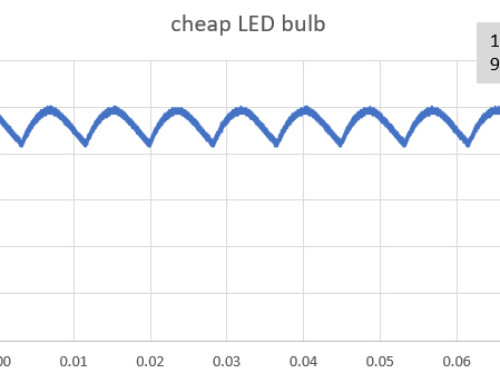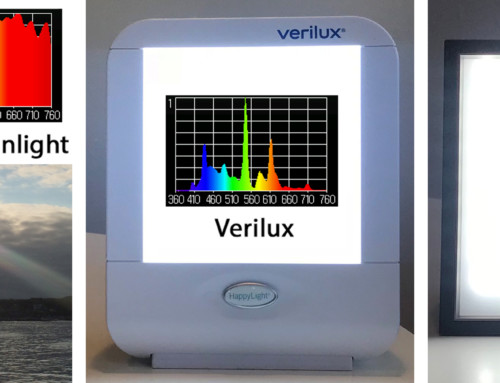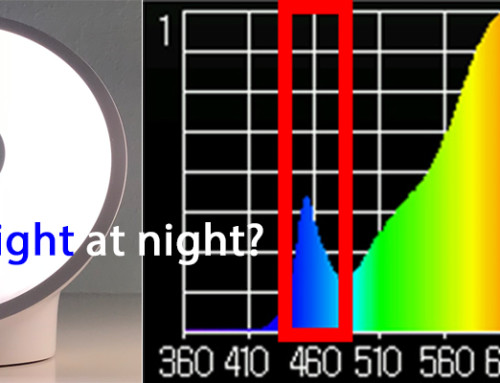Our health and wellness depends upon the daily cycles of natural light, but we don’t have to live in darkness after sunset – we just have to be smart about how we use artificial light. To put it simply: after dark we should avoid bright blue light which signals our bodies to be ‘awake and alert’. Light at night should dim and warm to avoid disturbing our sleep and confusing our bio-rhythms. In evolutionary terms, candle and fire light is OK at night, while artificial lights that emit bright blue light disrupt our circadian rhythms. In practical terms, we need to minimize our exposure to most fluorescents, electronic screens and LED light bulbs at night, since they emit bright blue light.
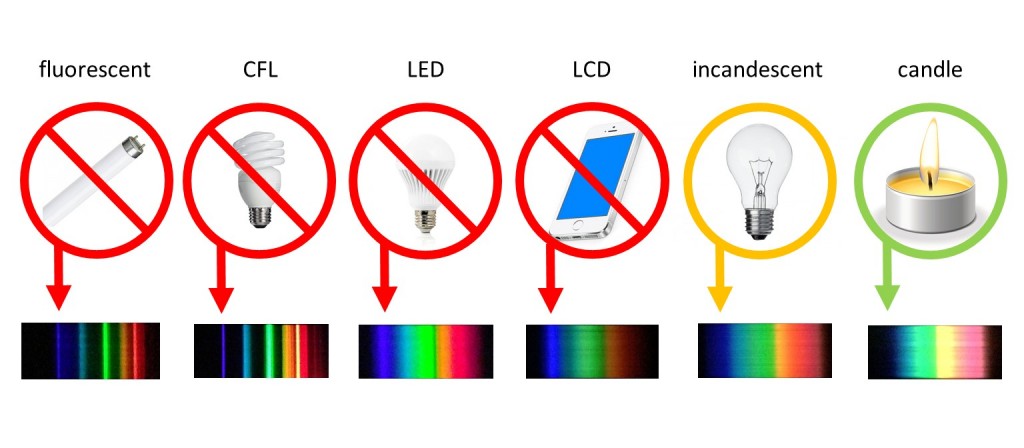
The disruptive influence of artificial light at night is proportional to how intense the light source is, how much blue light it emits, how close it is to our eyes, and how much time we’re exposed to it. Studies show that blue light acts like a drug, the brighter/longer the exposure the higher the ‘dose’ and the greater the biological impact. From a practical perspective, avoid bright lights and/or use dimmer switches to reduce the intensity of artificial light sources near you at night. Use f.lux or nightshift to reduce the impact of electronic devices at night, and minimize the amount of time you spend with a screen close to your eyes (viewing TV at a distance is much less disruptive than staring at a phone or tablet up-close). If possible, surround yourself with light from incandescents and halogens at night since they emit a much warmer light (and they should be dimmed to minimize their blue content). Physicians recommend minimizing exposure to bright blue light for two hours before bed.
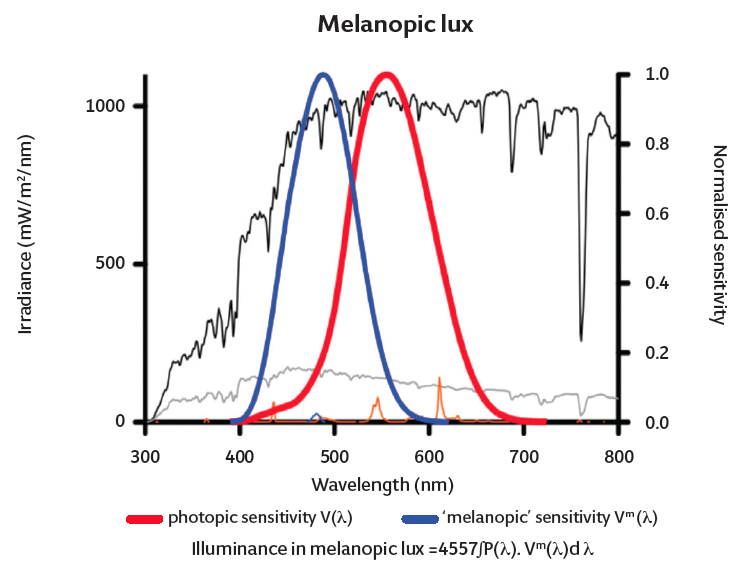
Our visual response to light is peaked in the green (red curve) while the our biological response to light is peaked in the blue (blue curve). Figure borrowed from Lucas.
Our bodies sense the time of day by measuring how much blue is present in our surroundings. Our biological response is most sensitive to blue, while our visual response is most sensitive to green light. A new class of light sources is now available which take advantage of the difference between our visual and biological response to provide artificial light that can be used safely at night. In simple terms, an ideal night-time light source provides plenty of green, yellow and red light (so we can see at night) and while minimizing blue light (to avoid stimulating our biological response). Well-designed Human Centric Lighting (HCL) systems automatically change the intensity and color of light with the time of day, and provide light at night which does not activate our biological response.
TIP: the intensity and color of the light sources you use at night impacts your health and wellness – choose warm/soft light sources (incandescent and halogen) and minimize the use/impact of screens at night to sleep and feel better!
additional resources/reading:
– article on human centric lighting design




